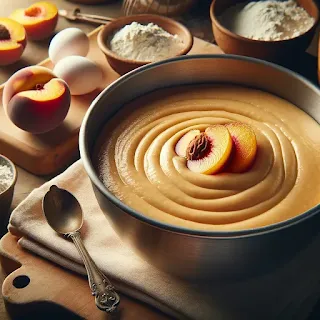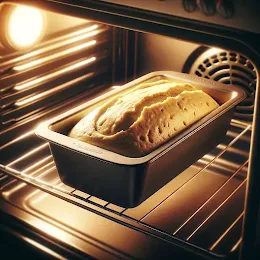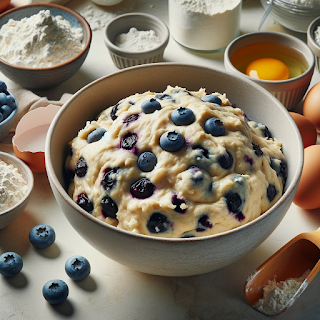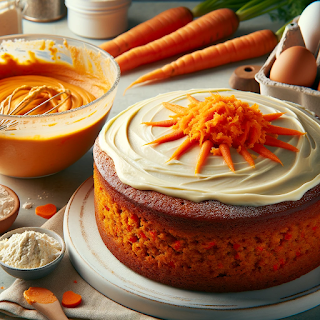Who doesn’t love waffles? 🧇 These fluffy, golden beauties are the ultimate breakfast (or brunch!) treat. Whether you’re stacking them sky-high with toppings or enjoying them plain with a pat of butter, waffles bring joy to every bite! ❤️ Let’s whip up a batch of crispy-on-the-outside, soft-on-the-inside waffles that are as fun to make as they are to eat. 🎉
Origin Story: Whimsical Waffles
Waffles aren’t just food—they’re nostalgia, happiness, and a little bit of breakfast magic. These golden, grid-patterned delights have traveled through history, gathering stories and flavors from around the globe, and now they’re here to transform your mornings. But how did they become the whimsical wonders we know and love today? Let’s dive into the delicious origin of these fluffy favorites.
A Waffle-Worthy Beginning
The story of waffles dates back over 1,000 years to medieval Europe, where they began as simple flat cakes made from grain flour and water. Cooked between two metal plates over an open flame, these early waffles were plain and utilitarian—more about sustenance than indulgence. But as time passed and culinary ingenuity grew, waffles became a canvas for creativity.
By the Renaissance, waffles had evolved into delicate confections flavored with honey, spices, and sometimes wine. They were no longer just food; they were an experience. Bakers designed intricate patterns into their waffle irons, turning each creation into edible art. These waffles graced royal feasts and street markets alike, becoming a favorite treat across Europe.
When waffles crossed the Atlantic with European settlers, they found a new home in America. Here, they gained popularity as a breakfast staple, celebrated for their versatility and crowd-pleasing appeal. Whether served at church socials, county fairs, or family brunches, waffles became a symbol of community and joy.
The Whimsical Twist
So where does the "whimsical" part come in? It’s said that the inspiration for these particular waffles came from a baker who wanted to create a recipe that was both foolproof and fun—a blank canvas for morning creativity. The baker imagined waffles as more than just a meal. They wanted them to be an event, a celebration of the start of the day.
Drawing from the heritage of classic waffles, they simplified the recipe to its essentials: flour for structure, baking powder for fluffiness, and melted butter for that irresistible crisp edge. But they didn’t stop there. They added a splash of vanilla for a touch of sweetness and encouraged everyone to personalize their waffles with toppings as whimsical as their imaginations.
The Magic of Waffles Today
The beauty of Whimsical Waffles lies in their endless possibilities. They’re the chameleons of the breakfast world, effortlessly adapting to whatever mood or craving strikes. Feeling indulgent? Pile them high with whipped cream and chocolate chips. Craving comfort? Go classic with butter and maple syrup. Need a savory twist? Add a fried egg and crispy bacon on top.
And let’s not forget their versatility. These waffles aren’t just for breakfast—they can be transformed into desserts, snacks, or even savory sandwiches. The magic is in their adaptability, making them perfect for every occasion.
Personal Connection
For me, waffles are a family tradition. Some of my favorite memories involve gathering around the waffle iron on weekend mornings, each of us customizing our waffles with different toppings. The sound of the batter sizzling, the smell of vanilla and butter wafting through the kitchen, and the sight of a perfectly golden waffle emerging from the iron—it’s pure joy.
When I created the Whimsical Waffles recipe, I wanted to capture that feeling of togetherness and creativity. This recipe is designed to be simple enough for a busy weekday morning but special enough to serve at a weekend brunch with friends. It’s all about making every bite feel like a little celebration.
A Breakfast Tradition Reimagined
Whimsical Waffles are more than a meal—they’re a moment. Whether you’re laughing with loved ones over a towering stack or enjoying a quiet morning with a single perfect waffle, this recipe brings a little bit of magic to your day.
Ingredients 🛒
- 2 cups all-purpose flour 🌾
- 1 tablespoon sugar 🍬
- 1 tablespoon baking powder 🌟
- 1/2 teaspoon salt 🧂
- 2 large eggs 🥚🥚
- 1 3/4 cups milk 🥛
- 1/2 cup unsalted butter, melted 🧈
- 1 teaspoon vanilla extract 🍦
Recipe Details 📏
- Prep Time: 5 mins
- Cook Time: 10 mins
- Yield: 4-5 waffles
Instructions
- Get Set, Waffle! 🧇Preheat your waffle iron to your preferred setting – crispy or soft, your choice! 🎛️
- Mix the Magic ✨In a large bowl, whisk together the flour, sugar, baking powder, and salt. In another bowl, beat the eggs and combine with milk, melted butter, and vanilla extract.
- Combine & Whisk 💫Slowly pour the wet ingredients into the dry, stirring just until combined. A few lumps are okay – don’t overmix!
- Pour & Cook 🍳Pour the batter into the preheated waffle iron (carefully, don’t overfill!). Cook until golden brown and crisp. Your kitchen will smell AMAZING. 🌟
- Stack & Serve 🏔️Serve warm with your favorite toppings and enjoy the waffle magic! ✨
Pro Tips 🎓
- Crispy Waffles: Add a tablespoon of cornstarch to the batter for extra crispiness.
- Buttermilk Swap: Use buttermilk instead of regular milk for a richer flavor. 🥛
- Freeze-Friendly: Make extra and freeze for quick breakfasts – just pop in the toaster! 🧊
Topping Ideas 🍓🍫
- Classic: Butter & maple syrup 🍁
- Decadent: Whipped cream & chocolate chips 🍫
- Healthy: Fresh fruit & Greek yogurt 🍓
- Savory: Fried egg & crispy bacon 🥓
Waffles are the perfect canvas for creativity! 🧇 Whether you keep it simple or load up the toppings, these Whimsical Waffles will bring a smile to your morning. So, dust off your waffle iron and make some breakfast magic today. 🍽️✨













